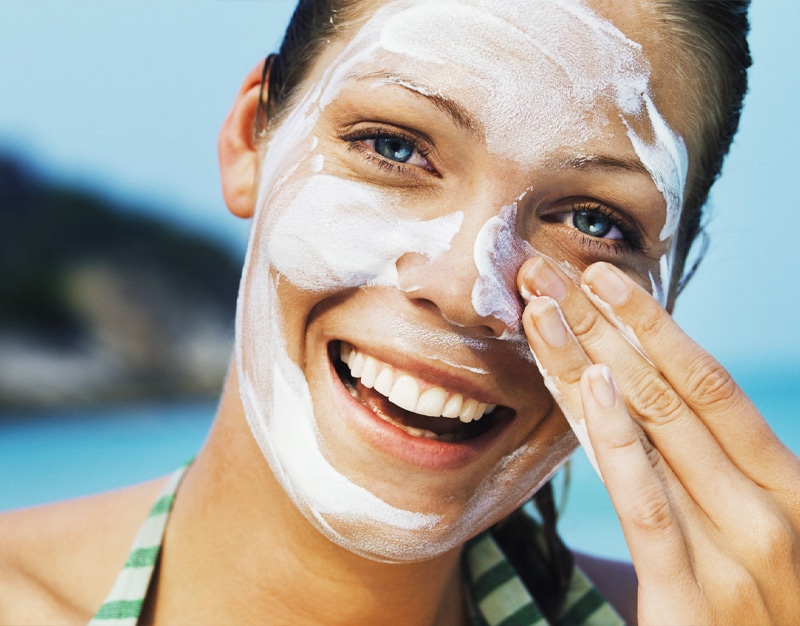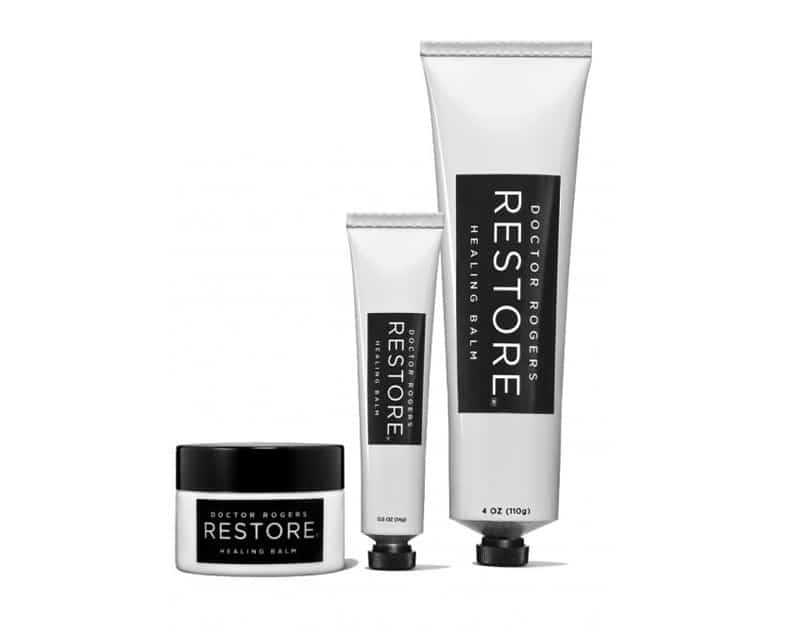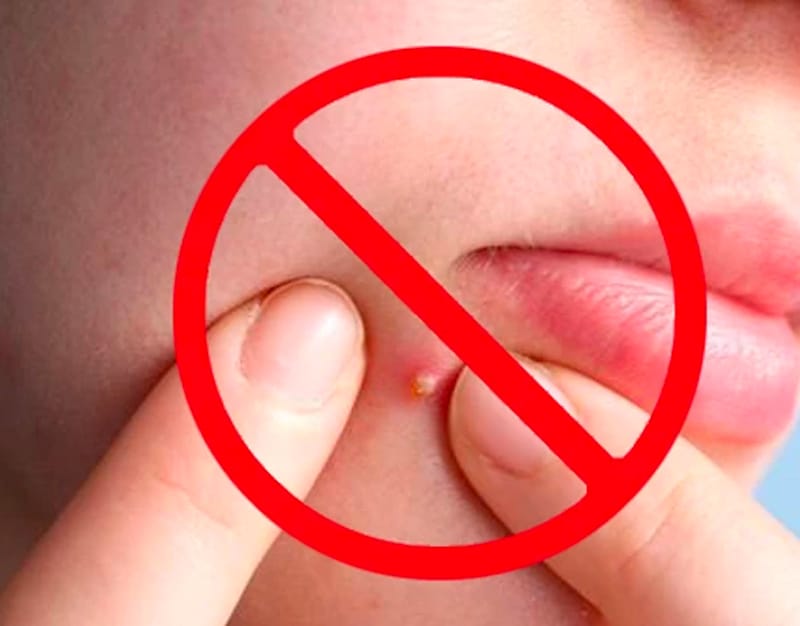Finally it’s here…spring! The tulips and daffodils made their grand debut and the sun is out until almost 8pm!!! Stronger and longer sun exposure means it’s time to really find that sunscreen you love and reapply, reapply, reapply!
I have been seeing so much great and misinformation online these days, I wanted to separate the good from the bad. So, with a note to Skin Cancer Awareness Month, I’m going to wrap it all up here with a blog post I’m calling, “Sunscreen: Facts and Myths.”
First let’s discuss the mechanics of a sunburn vs a tan. Don’t be fooled, both are signs of cellular damage to skin cells!
Sunburn:
A sunburn is a radiation burn! UV rays damage DNA in the upper layers on our skin. Too much DNA damage too quickly and skin cells self-destruct. The resulting inflammatory reaction manifests in redness, swelling, blistering, and pain. Eventually, the skin peels away but the risk for skin cancer and premature aging persists.
Tan:
A tan is UV radiation causing genetic damage to skin cells! The resulting darkening in your skin is your pigment producing cells (melanocytes) trying to limit further damage by making melanin or pigment umbrellas over the rest of your DNA. All this damage is cumulative, starting with your first tan as a child. That “glow” you may experience is actual evidence of cellular damage to your skin which speeds up the visible signs of aging and leads to skin cancers.
Facts and Myths
Let’s talk about sunscreen facts and myths now. Sunscreens are essentially filters to minimize or block UV rays from damaging our skin cells. There are chemical/organic filters and mineral/physical/inorganic filters. I will not go into detail regarding the differences between the two because the best sunscreen is one you wear and reapply.
I personally prefer mineral sunscreens as they block both UVA and UVB rays, work as soon as applied (chemical sunscreens need 15-20 minutes to absorb and start working), are photostable (won’t degrade as soon as the sun hits), cause less skin irritation and eye burning, are less likely to clog pores, and have minimal risk of being absorbed into the bloodstream. Seems like I don’t like chemical sunscreens. Not true, just a preference. Again, the best sunscreen is the one that you DO NOT HATE APPLYING – one that you feel is easy to apply and reapply, looks nice and feels nice on your skin.
Fact or Myth? Sunscreen causes skin cancer:
MYTH! There is no evidence that this occurs. But there is loads of evidence that UV radiation causes skin cancer. Anyone check out my surgical gallery yet? You can see lots of skin cancers on sun exposed body parts that I have removed. I hope these photos motivate you to wear sunscreen. Show your teenagers as well if they give you resistance. We know that chemical sunscreens can be absorbed into the bloodstream. We do not know if they are harmful though. So if you are worried, stick to mineral sunscreens which I prefer anyway.
Fact or Myth? Dark skin does not need sunscreen
MYTH! More melanin does afford some protection and it may take longer to get a sunburn but it can definitely happen no matter what color the skin. I have removed skin cancers in all skin types! Another reason to wear sunscreen on darker skin tones: darker skin hyperpigments more easily so any inflammatory lesions like pimples will turn darker than the surrounding skin and the skin will appear more blotchy and uneven.
Fact or Myth? There is no need to reapply waterproof sunscreen because the label says it’s waterproof
MYTH! It’s not waterproof. It’s water resistant and the water and/or sweat will make it come off faster so please reapply more often, every hour actually.
Fact or Myth? The right amount of sunscreen to apply is 1/4 teaspoon for the face and 1/3 teaspoon for the face and neck combined.
FACT. Do not believe Goop founder, Gwenyth Paltrow, who applies sunscreen as highlighter. She should know better. The correct amount is 2- 3 finger lengths of sunscreen for the face and neck and one shot glass or an entire palm of product for a full adult body. By the way, studies show that most users probably only get about 30-50% of the protection of the labeled SPF because they are not applying a thick enough layer of sunscreen.
Fact or Myth? The SPF in makeup is enough, there’s no need for additional sun protection
MYTH. The amount of sunscreen in make-up doesn’t even count! Please always wear your regular sunscreen under your makeup. Think about it … do you apply the 1/4 teaspoon worth of your SPF foundation, powder, or blush that would effectively provide enough sun protection to your entire face? Would love to see that look!
Fact or Myth? There’s no need to wear sunscreen if it’s cloudy
MYTH. Clouds consist of water vapor and UV rays are getting through so just make it a habit of applying your sunscreen daily and reapplying for walks or outdoor activities no matter the cloud situation.
Fact or Myth? My sunscreen is SPF 50 so I don’t need to reapply it as often as an SPF 30
MYTH. The number has nothing to do with the duration of protection so please reapply every 90-120 minutes.
Fact or Myth? There’s no need to wear sunscreen in the car
MYTH. UVA rays penetrate glass. Most people have more sun damage (brown spots, wrinkles, actinic keratoses) on the left side of their faces from driving exposure. Please apply sunscreen while indoors as well because sun exposure is cumulative so small increments coming in through the window adds up. To be honest, while I do wear sunscreen indoors but I don’t reapply as much.
Fact or Myth? Mineral or inorganic filters are better for sensitive skin
FACT. They tend to be less irritating to the skin and less likely to cause eye stinging. That said, organic or chemical sunscreens tend to have better texture and are more cosmetically pleasing. I just want you to find one you like and reapply. You can always go hybrid and get the best of both worlds.
Fact or Myth? Higher SPFs are more protective
FACT. SPF 100 is slightly more protective than 50 which is slightly more than 30 which is significantly more than 15. But, higher SPFs are often thicker and greasier, more expensive, and more difficult to spread so you may end up applying less. Don’t fret over the SPF number as long as it’s above 30. Feel free to use different types or brands for different activities or exposures. That’s what I do. I’ll use a lighter one for work and a thicker one at the beach. Throw out your sunscreen if it’s not working for you but working for your friend. Or use it at the beach because everything is icky sticky there. Got to kiss a lot of frogs to find your sunscreen true love.
Fact or Myth? You don’t need SPF if you use a Vitamin C serum
MYTH. I applaud your Vitamin C usage and would like you to think of it as a symbiotic relationship. The Vitamin C helps manage any oxidative damage from UV rays that get through the sunscreen filter which happens because real-life sunscreen application is imperfect.
Fact or Myth? Sunscreens cause coral reef bleaching
FACT AND MYTH. Politicized and sensationalized. The evidence is pretty weak. We are led to believe that there is extensive scientific evidence that oxybenzone and octinoxate is causing coral reef decline but it is not true. We are not seeing coral deaths and damage where sunscreen concentrations are the highest. The Australian government found that most of the coral reef damage occurred in areas with low human interactions and healthy reefs were noted in heavy traffic areas. The truth is that better studies need to be done and blaming 2 sunscreen ingredients while not addressing bigger threats like climate change and agricultural management is ridiculous and political. I want to save the corals so I am cool with avoiding these chemicals; at the same time I doubt I’m making a difference. This is a bigger political issue than picking out reef-safe sunscreen. Of note- studies have shown that zinc oxide is harmful to the reefs as well but it’s not banned (only nano-particles tested).
Fact or Myth? SPF feels tacky/sticky/gross/leaves a white cast
Partially TRUE. I remember hating sunscreen as a kid in the 80s because there weren’t many options and they were thick and white and gross. But how things have changed. There are so many elegant options now and it’s worth researching and experimenting and finding one you don’t hate. I don’t love my sunscreens as much as I love my liquid eyeliner but I don’t hate them either. I know which ones work for me and I am happy to share those with you. Check out my instagram for my ongoing sunscreen journal where I try on different brands and tell you how they feel and if they leave a white cast.
Here are a couple more random sunscreen facts that fascinate me:
Sunscreens are not shields or umbrellas or walls. They do not filter 100% of UV rays but help filter some radiation so please wear a hat, sit under a beach umbrella or in the shade, and wear sun protective clothing.
Reapplication cannot be stressed enough. Chemical actives break down in the sun and both mineral and chemical sunscreens get diluted with sweat, touch, and general movement, so effectiveness absolutely decreases over time. Studies show that a uniform thick layer of sunscreen is the most effective – like an even layer of paint on the wall. That means a heavy application since our skin has hills and valleys. This is where the usability or elegance of the sunscreen comes into play: if it’s more spreadable, it will be easier to apply effectively. If it leaves a white cast and is cosmetically unacceptable, studies show users apply less. So please find one that is easy and pleasant to use and reapply.
My current favorite sunscreens:
- ISDIN Eryfotona Actinica- for face/neck, chest, hands
- Coola Full Spectrum Mineral Sun Silk Creme SPF 30- for face/neck
- SkinBetter Sciences Sunbetter Sheer SPF 56 stick- for face/neck, ears, lips, touchups. Great for men.
- Bare Republic Mineral SPF 30 Sport Sunscreen Spray- Citrus Cooler or Coco Mango- for body
- Elta MD UV Clear for acne prone skin
- Elta MD UV Lotion – for body
I’m going to be testing out lots of sunscreens, so let me know if there are any you want me to try before you do!




